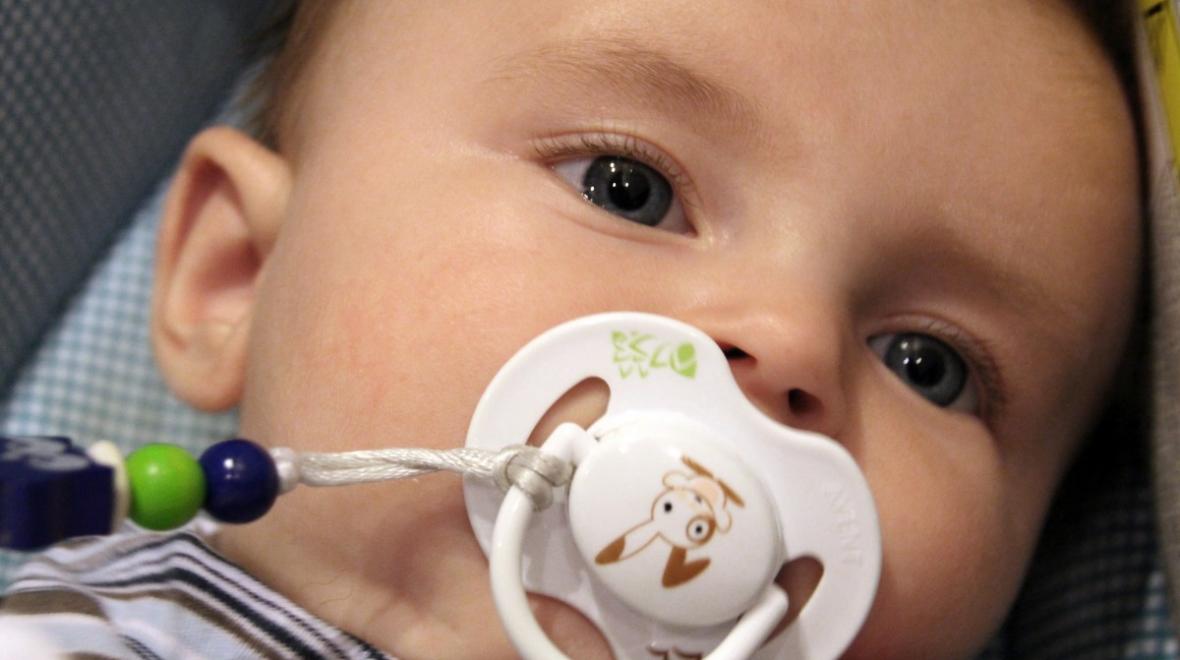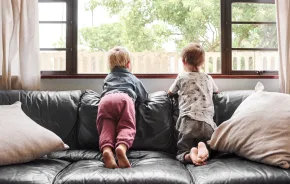
If there was ever a day for adventure, this was it. The yard was a 6-inch snow marshmallow and the afternoon air was still for a Saturday in our neighborhood. Our daughter shoved her feet into chunky pink snow boots, I zipped her coat and we leapt hand-in-hand into the snow as if it were made of yellow brick.
M, our first-born, was a flexible baby. She nursed well, had no problem with bottles when it came time for me to go back to work and could soothe herself into a 12-hour sleep with nothing but a pacifier and a little white noise. For her first two years or so, my husband and I were liberal with the pacifier. Many medical professionals agree that pacifiers help baby self-soothe and prevent the Voldemort of parenthood: sudden infant death syndrome (SIDS). As a prolonged thumbsucker, I also encouraged the pacifier for its disposability when it came time to give it up.
As M approached her third birthday, the pacifier (or “binky,” as she called it) grew from a pleasant aide in our household to an annoyingly persistent sidekick. Our daughter’s vocabulary was growing and she had the cadence of a 6-year-old. But there she was: playing with her toys shouting imaginative scenarios with a pacifier hanging from her mouth as if she were Joe Pesci with his cigar.
We attempted to limit the “bink" to bedtime and car rides, but M was persistent. She wanted it every time she cried. She wanted it when she was tired. She wanted it while we traveled. She wanted it on her placemat during meals. And when she couldn’t have the pacifier in a tender hour, a super tantrum emerged.
Despite constant encouragement, M also spoke with the pacifier in her mouth and I noticed she rested her tongue in the front of mouth. A study by the department of Speech-Language pathology at Cincinnati Children’s Hospital says “tongue thrust” can be caused by prolonged sucking and “extended pacifier use” and can lead to speech disorders, such as a lisp, especially after age 3.
My husband and I knew the pacifier had passed its prime, but we dreaded the late nights that might ensue after we took it away and the impact it could have on M’s ability to comfort herself. When my mom called with news of an exciting children’s boutique-find, Oli & Carol’s Olive the Deer bracelet, we decided to finally make the leap. Made for tiny wrists, the bracelet is akin to the ever-popular Sofie the Giraffe, is made of Hevea tree rubber, painted with food-grade dyes, biodegradable, non-toxic and has no hole for water to get in. It’s also an adorable, long-lashed fawn that M could wear whenever she wanted.
As an elaborate parenting scheme developed, I waited for the weather to foster a feeling of magic. After a big snow — and a big nap — I asked M if she wanted to wrap her “binkies” in a beautiful box, bundle up and bring them outside.
“M,” I said, catering to her delight in nurturing stuffed animals, “Mommy can hear the baby deer crying at night because they do not have binkies. Do you think, since you’ve had yours for a long time, you could give the baby deer your binky?”
M was enthralled by the idea and lead me toward the woods and placed her decorated “binky” box at the base of a tall tree. Seeing as baby deer are shy little things, we went inside and waited until nightfall. When M and my husband ventured back out with a flashlight, the baby deer had taken the pacifiers, but left a bracelet in the box as a thank you.
In the weeks that followed, M occasionally called out to the baby deer for her pacifier. We’d remind her of her act of kindness and soon her “binky” dependence became a proud memory of helping others.











